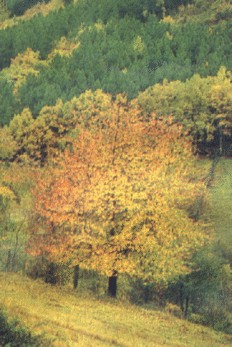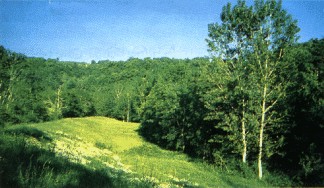| Situated
in Tras-os-Montes, in the region of Montanhas to the north east of Portugal
and with the Spanish mountains as neighbours, Montesinho is a fantastic
mixture of natural resources and very old, cultural heritages.
Text
provided by the Portuguese Tourist Office (with minimal corrections)

The
mountains carry on as far as the eye can see, into Spain. Unexpectedly,
there are coloured birds and melodious bird songs that it is almost impossible
to hear in less hidden places. At a distance, against the blue of
the sky, you can follow the sinuous flight of a royal eagle. At the crossing
of the pathways it is easy to detect the footprints of wolves and foxes,
deer droppings and to see where the wild boar has passed.
The
wolf is an ex libris of the region, as it is believed that the greatest
concentration of this species on Portuguese territory is in Montesinho.
The roe deer, the fox, the wild cat, the badger and the otter are other
mammals that roam here. The most important of the birds are the royal eagle,
the kite, the hunting kestrel and the field thrush. The horned viper, which
always avoids contact with Man, or less offensive species such as the Sardanisca
iberica (Iberian wall lizard), can occasionally be seen. The numerous rivers
and streams are populated with trout, bass, snook and barbels.
The
immense forests of black oak are one of the region’s main riches, which
living in harmony with the sweet chestnuts, the symbol of the natural park,
contribute to the balance of the forest. On the rocky slopes there is an
abundance of white birch, heather and broom, whilst on the banks of the
rivers there are alders, willows, hazels and poplars.
The
isolation provided by the mountains gave rise to the development of unique
cultural forms. The ‘Rionorês’ dialect itself, spoken by those living
along the River Onor and Guadramil, the community forges and ovens, the
cattle herding and the neighbourhood counsels are living examples of the
well rooted social and community traditions. |
